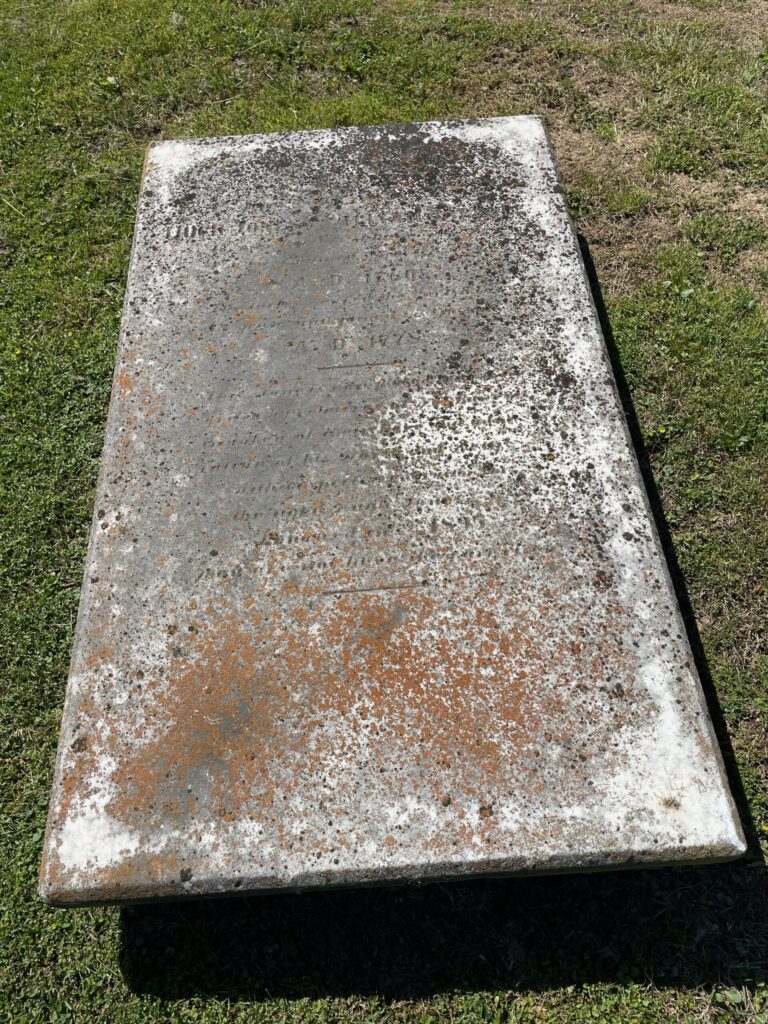Erik Visits an American Grave, Part 1,373
This is the grave of Hugh Jones.

Born in 1691 in Little Dewchurch, Herefordshire, England, I don’t really know much about his background, but Jones ended up at Oxford, which at that time tells you about what you need to know. He graduated from Oxford in 1712 and stayed on for a master’s degree that he finished in 1716. His fields of study were geometry, geography, and astronomy. From there, he headed to the colonies. I imagine there were good opportunities for him and he got a job teaching math at William & Mary, the college for the Virginia elite who couldn’t quite send their kids to England for higher education. This made Jones one of the few people in the colonies, and especially the southern colonies, who knew the first thing about modern science.
We don’t know a ton about Jones’ time at William and Mary, but we can say that it didn’t seem to go very well. He got into arguments with the school’s leadership. There was something of a battle in colonial Virginia at this time over ecclesiastical authority granted to the school’s leader and Jones didn’t like that. In any case, he resigned in 1721 and briefly went back to England. He also was a minister and he returned to Virginia in 1724 to run a congregation. That didn’t last very long though because……he and the congregation disagreed on where the pulpit should be in the church. I dunno man, does it matter? But oh yes, it mattered! So he quit. Someone who knows more about 18th century Anglicanism than me can maybe explain more.
A year later, Jones was in Maryland and he stayed there for the rest of his life, working at two different parishes. But that doesn’t mean he left his scientific training behind. In fact, he became of colonial America’s leading scientists. Among the key issues of the day was calendar reform. This is what led to the adjustments of the Georgian calendar and the huge riots in England over it. He was under the idea that a 364 day year would replicate the sun, which of course is wrong, but he wanted to rationalize the calendar so that every year would start on the same day of the week. He was also very big on currency reform, not in the way you think, but in making money divisible by 8 instead of by 10. I will let him explain this:
“Whereas reason and convenience indicate to us a uniform standard for all quantities; which I shall call the Georigan standard; and that is only to divide every integer in each species into eight equal parts, and every part again into 8 real or imaginary particles, as far as is necessary. For tho’ all nations count universally by tens (originally occasioned by the number of digits on both hands) yet 8 is a far more complete and commodious number; since it is divisible into halves, quarters, and half quarters (or units) without a fraction, of which subdivision ten is uncapable….”
OK? It is however an interesting enough observation that our entire human culture around tens is really just about our fingers. Probably true.
Jones also wrote about a wide variety of issues. Even today, his The Present State of Virginia, published in 1724 is considered by historians to be one of the most important documents we have about early 18th century Virginia. At least a piece of it is available here. And this is considered one of the really critical documents on teaching about the rise of Virginia slave society. Think of it as kind of an early version of Jefferson’s Notes on the State of Virginia. Really, from the moment Columbus stumbled his murderous ignorant ass on the Americas, Europeans were totally fascinated by everything happening across the pond. I mean, it makes sense. It’s like if we discovered life on another planet today.
Jones also got involved in the grammar world. Also in 1724, he published the amazingly titled, Accidence to the English Tongue, chiefly for the use of such boys and men, as have never learnt Latin perfectly, and for the benefit of the female sex; also for the Welch, Scotch, Irish and foreigners.
Even the Irish?
One thing that has annoyed colonial historians for a long time is that there’s at least four relatively important people named Hugh Jones all in Maryland and Virginia at the same time and it can be very difficult to tell them apart, even for the best historian. Michael Kammen wrote a bit about this here while publishing a letter by a different Hugh Jones. Here’s a piece on one of the other Hugh Joneses.
Jones died in 1760, approximately 69 years of age. He seems to have worked as rector of his church until shortly before his death.
Hugh Jones is buried in Saint Stephens Episcopal Cemetery, Earleville, Maryland.
If you would like this series to visit other early American scientists, you can donate to cover the required expenses here. Jared Eliot is in Clinton, Connecticut and James Logan is in Philadelphia. Previous posts in this series are archived here and here.


